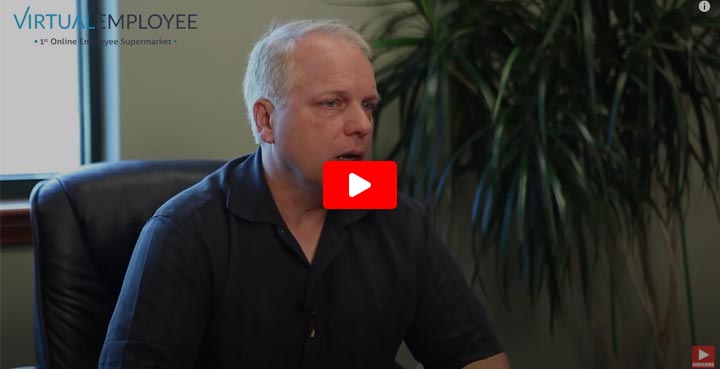While aiming to be relevant and competitive, most businesses cease to be innovative. In such a scenario, the obvious solution is to make time – for implementing innovation in organizations.
And just how do you do that?
Through outsourcing.
Organization and Innovation – the power of ‘CAST’
Why is it that most businesses aren’t innovative when, at some point, they had innovative ideas? That’s because having innovative ideas and being an innovative organization are two different things.
Four main elements make an organization innovative:
- Creativity – The big ideas that give an organization its start.
- Appetite for Experimentation – Trial and error until the organization ‘hits the big idea’.
- Strategy – Project management execution and implementation for efficient management of projects, and
- Time to experiment – Quick access to resources so that organizations can wade swiftly through failed ideas until they strike gold.
When viewed from this perspective, most organizations face a lack of innovation due to their strategy, resource conflicts, and culture, rather than creativity. One of the benefits of outsourcing in business is that it fosters innovation. Outsourcing can help businesses make the jump from simply having an ingenious idea to building an organization that thrives on an avant-garde culture.
In his book, The Lean Startup, Eric Ries explains that a start-up should ‘learn how to build a sustainable business’ model and ‘test assumptions’ as quickly as possible. The Lean Methodology, thus, offers solutions to the problem of lack of innovation through strategy and execution. The quicker we analyze the outcomes, the faster we can dispel or validate our hypothesis.
Complex prototypes, thousands of wasted hours on features, and endless strategy meetings are a waste of time. What organizations must focus on, is building a Minimum Viable Product or an MVP. The MVP gives us real data and is often the quickest route to testing a hypothesis and garnering feedback from its early adopters. Instead, in the words of Eric Ries, what most startups do is ‘achieve failure’ – by executing a business idea successfully, only to find that nobody wants their service or product.
He further adds that if you have an innovative idea, there’s no need to worry about a big competitor stealing it or even launching a project just because it is innovative. The only route to building a sustainable business in the long run is assessing if there is scope to learn faster than everyone else. This, in turn, makes legal protection a moot point.
As its name suggests, an MVP features the crux of your idea, minus all the bells and whistles. Instead of investing a lot of time in building a comprehensive product, the innovators offer a version with enough features to early users who then provide feedback for further development.
This serves two purposes:
- You learn about the market demands and accordingly tweak your product.
- The faster you launch, the faster you learn. The faster you iterate, the faster you have something that the market wants.
…and all this at a fraction of time and cost!
Eric cites the example of a startup that was working on developing a subjective search engine. Instead of spending a whole year to program and train their algorithm, the founders just faked it.
Aardvark was a social search engine launched by Damon Horowitz and Max Ventilla. It was later acquired by Google. They used the Wizard of Oz testing approach where consumers think that they’re interacting with the algorithm but instead, it’s the real humans behind the scenes. Of course, this was highly inefficient but it provided them valuable insights about their market from Day 1 – something that would’ve not been possible had they built the product from scratch.
The whole point of talking about the Lean Methodology here is to focus on reducing the learning curve. When you add outsourcing to the mix, approaching the learning stage becomes even faster.
How?
Outsourcing is plug-and-play. You don’t beat around the bush with interviews, recruitments, and office infrastructure. Rather, you get going with the fourth pillar of innovation – Marketing. So, if it takes you a year to develop a robust and feature-laden prototype, an MVP reduces this window to just two months. And outsourcing can slash those two months right down to zero!
Before you get down to building your MVP, you might need to raise funds for leasing an office or a co-working space and the infrastructure, recruit developers, programmers, and UI/UX designers. But when you outsource, you will only spend a fifth of the funds that were originally required. This way, your innovative idea gets transformed into an MVP quickly and you get to choose a larger and more experienced talent pool, at a fraction of the cost of hiring developers on your own.
Lean methodology and outsourcing together can give you a double win on time. But wait a minute, is speed that important?
Yep!
Strategic innovation through outsourcing – How important is speed?
Nick Ray, former Head of Innovation at Priva, feels that faster turnaround times (TAT) are highly desirable. Nick decided to meet Shaun, the CEO and co-founder of Virtual Employee in 2016 at Priva’s office. He explained that Virtual Employee’s embedded software and hardware engineers helped kickstart his projects six months earlier. He observed that a quick launch is even more important than patenting the idea. In Nick’s words, ‘first to market gets 25% of the market share.’
Watch the full interview here:
The instinct to protect a great idea – especially by patenting it – is quite natural. But one must discern whether the time spent on legal protection would rather have been better spent on launching and learning? If you see the merits of Lean Methodology, you surely agree with the advantages of outsourcing in business. If you appreciate the value of shortening strategy in the cycle of innovation, then surely the same must hold true for experimentation?
Robert Hess, the CEO of Paragon Print Systems, is in conjunction with Nick. I met Robert in 2015 and he told me that it would have taken him six months to hire the right software developers for his business in-house, while Virtual Employee provided him with the right talent in just a couple of days! Olivier Cant, the CEO of Exxoss, a Belgium-based IaaS company, also concurs with Nick and Robert. Exxoss hired several software developers from Virtual Employees.
So, you see, the correlation between outsourcing and innovation is clearly strong. Taking several months to just find and recruit the right developers is truly a recipe for disaster, as far as running a highly innovative organization is concerned.
Watch the full video here:
But if you thought that outsourcing can only inculcate innovation to speed things up, hold your horses. Outsourcing can play a pivotal role during research and development too, by promoting a culture of experimentation. This is only possible if we’re comfortable with higher failure rates.
Regardless of whether we fail or succeed in our endeavor, the hallmark of a highly innovative organization is to keep experimenting. The most innovative organizations keep repeating the processes; going back to square one over and over again till they hit the home run. This reiterative loop is what distinguishes ordinary organizations from innovative businesses. Innovation spurts from a culture of continuous growth – through consistent pushing of boundaries, unlike a one-time effort.
Innovative outsourcing – Where CEOs go astray
The problem for most business owners and CEOs is that they are wary of financial losses. It’s not that they discourage experimentation – or failure for that matter – but financial losses instead. Losing money doesn’t sit right with CEOs and eventually becomes the catalyst in stifling innovation.
The cost of experimentation is relatively lower in outsourcing as opposed to in-house resources – allowing top management to more readily accept and experience failure. They can give their teams greater freedom and motivate them to truly ‘push the boat’ because even if they fail, it would not be the end of the world.
In a nutshell, becoming ‘comfortable’ with failure is essential if organizations want to cultivate a culture of high experimentation. In fact, outsourcing innovation could reduce the fear of failure and allow your employees to realize their full potential. Plus, it will give you the bandwidth to launch more projects that would otherwise be an expensive undertaking (and therefore, too risky).
Interestingly, risk is not the only inhibitor of a culture of high experimentation. Access to the right talent is a true pain point for a majority of businesses. The proclivity for high experimentation requires immense business agility, and, in turn, quick access to a diverse pool of technically sound professionals.
But there’s a catch. Often these professionals are only required for brief periods and are often expensive to acquire. On one hand, to create a high experiment culture, you need a big pool of talented professionals who’re available instantly, but on the other hand, you don’t require all of them permanently.
It doesn’t make sense to hire every talent in-house for a few months or weeks when you can work around professionals with flexible schedules. Neither is it ethical to adopt a policy of hire-and-fire nor is it very much feasible in the long run.
Outsourcing and Innovation – Don’t question the outcome, question the cause
I think the reason why we fail to appreciate the detrimental effect of a slow market time and fear of failure is because we view innovation from a wrong perspective. By associating innovative organizations with innovative ideas, we put the ‘whiteboard’ and innovation in the same class. That’s incorrect. This is precisely why startups build prototypes instead of MVPs and why CEOs ignore the severity and insidious impact of delayed marketing time and fear of failure.
When we think of the importance of outsourcing in business, we generally think of ‘faster time to market’. However, this phrase does a poor job of connoting the actual value and power of outsourcing. In the context of the desire to build innovative organizations, the power of outsourcing can be realized once we view innovation through the lens of the CAST cycle that I’ve proposed above.
Only after this should we evaluate where and how outsourcing reduces the time to market and outsourcing what projects enables us to play around with more ideas. Once we do this, we can objectively appreciate the correlation between outsourcing and innovation – making our organization ‘super lean’ and agile.









